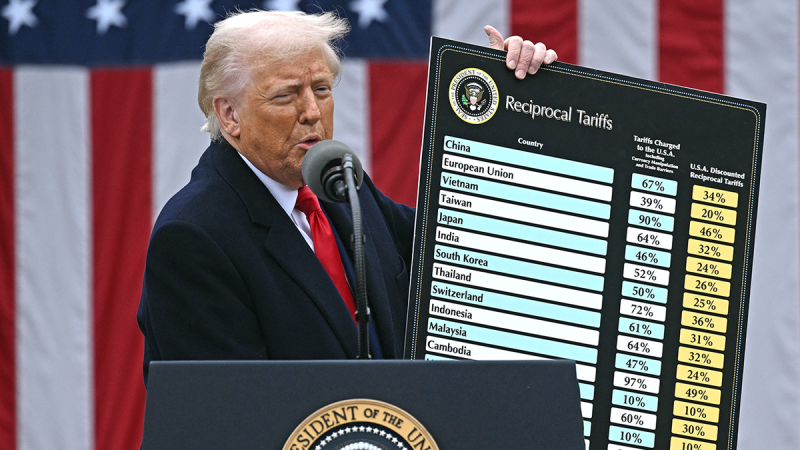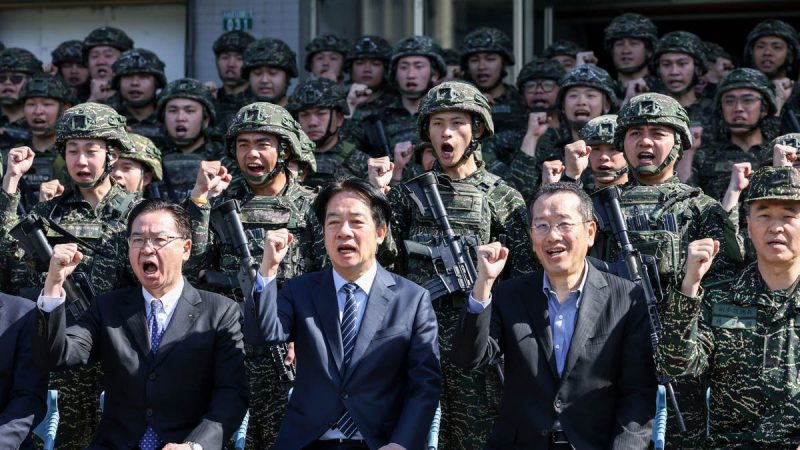Statistics Canada reported on Friday (May 30) that real gross domestic product (GDP) gained 0.5 percent during the first quarter of 2025. Even on a per capita basis, real GDP posted a strong 0.4 percent increase.
The agency primarily attributed the rise to a 1.6 percent increase in exports during the quarter. The higher export amounts were led by a 16.7 percent growth in passenger vehicle exports and a 12 percent rise in industrial machinery, equipment and parts exports, both of which were driven higher in response to imposed and threatened tariffs from the United States.
On a monthly basis, the GDP registered a 0.1 percent gain in March, following a 0.2 percent contraction in February. The most significant contributor to the rise came from the resource sector, which posted a 2.2 percent increase, with oil and gas gaining 2 percent.
When it came to mining, metal ore mining rose 1.7 percent overall. Copper, nickel, lead and zinc recorded a 2.4 percent gain, while the other metal mining category increased by 16.9 percent. However, a 3.1 percent decline in gold and silver mining hindered overall growth across the subsector.
South of the border, the US Bureau of Economic Analysis (BEA) released its second estimate for first quarter GDP on Thursday (May 29). Its figures indicated that GDP contracted 0.2 percent in the first three months of the year, down significantly from a 2.4 percent gain in the fourth quarter of 2024.
The Bureau attributed the decline to an increase in imports and a decrease in government spending. However, the agency also noted that upturns in investment and exports partially offset the fall during the quarter.
On Friday, the BEA released April’s personal consumption expenditures (PCE) index. The data shows that on an annual basis, all items PCE growth had further slowed to 2.1 percent compared to the 2.3 percent recorded in March. PCE less the volatile food and energy categories also slowed on an annual basis, up 2.5 percent in April compared to 2.7 percent in March.
The PCE is the preferred inflationary measure used by the US Federal Reserve to set its benchmark interest rate, the Federal Funds Rate. The slowing pace is currently in line with the central bank’s 2 percent target goal. Still, with uncertainty surrounding tariffs and US economic policy, most analysts expect the Fed to maintain the rate at the current 4.25 to 4.5 percent range when it next meets on June 18 and 19.
Markets and commodities react
In Canada, major indexes were mixed at the end of the week.
The S&P/TSX Composite Index (INDEXTSI:OSPTX) gained 0.9 percent during the week to close at 26,175.05 on Friday. However, the S&P/TSX Venture Composite Index (INDEXTSI:JX) fell 0.02 percent to 694.40 and the CSE Composite Index (CSE:CSECOMP) shed 3.78 percent to 115.01.
US equities were in positive territory this week, with the S&P 500 (INDEXSP:INX) gaining 2.24 percent to close at 5,911.68, the Nasdaq-100 (INDEXNASDAQ:NDX) rising 2.57 percent to 21,340.99 and the Dow Jones Industrial Average (INDEXDJX:.DJI) adding 1.79 percent to 42,270.08.
The gold price was flat this week, posting a loss of just 0.04 percent, to close Friday at US$3,293.21. The silver price was also marginally down, shedding 0.54 percent during the period to US$32.87.
In base metals, the COMEX copper price fell 3.47 percent over the week to US$4.72 per pound, pulling back from its gains seen late last week. Meanwhile, the S&P GSCI (INDEXSP:SPGSCI) posted a decline of 1.57 percent to close at 524.66.
Top Canadian mining stocks this week
How did mining stocks perform against this backdrop?
Take a look at this week’s five best-performing Canadian mining stocks below.
Stock data for this article was retrieved at 4 p.m. EDT on Friday using TradingView’s stock screener. Only companies trading on the TSX, TSXV and CSE with market capitalizations greater than C$10 million are included. Companies within the non-energy minerals and energy minerals sectors were considered.
1. Adyton Resources (TSXV:ADY)
Weekly gain: 96.55 percent
Market cap: C$59.79 million
Share price: C$0.285
Adyton Resources is working to advance the Feni Island and Fergusson Island gold projects in Papua New Guinea.
The Feni Island site has seen historic exploration, with 212 holes drilled over 18,813 meters. While limited work has been conducted by Adyton, a 2021 resource estimate shows an inferred resource of 1.46 million ounces of gold. The company has been working to expand its gold resource and explore for copper at greater depths than previous exploration.
While Feni Island has been its primary focus, Adyton has also been working to advance its Fergusson Island project.
The project consists of two advanced exploration licenses for the Wapolu and Gameta targets, which host a combined indicated resource of 173,000 ounces of gold and an inferred resource of 540,000 ounces of gold. The site also hosts a past-producing mine, which was abandoned in the 1990s.
On March 12, Adyton reported that a team from the Papua New Guinea Mineral Resource Authority had visited the Fergusson Island site to familiarize themselves with the project and to provide an approval process for the restart of the mine.
The most recent news from Adyton came on Wednesday (May 28), when it released its first quarter management discussion and analysis. In the report, the company provided a summary of its activities during the first quarter and demonstrated an increase in its balance sheet compared to the previous quarter.
2. Sterling Metals (TSXV:SAG)
Weekly gain: 80.77 percent
Market cap: C$15.15 million
Share price: C$0.47
Sterling Metals is an exploration company working to advance a trio of projects in Canada.
Over the past year, its primary focus has been on exploration at its brownfield Soo copper project in Ontario, which it recently renamed from Copper Road. The 25,000 hectare property hosts two past-producing copper mines and has the potential for larger intrusion-related copper mineralization.
On January 15, Sterling announced results from a 3D induced polarization and resistivity survey that covered an area of 5 kilometers by 3 kilometers and revealed multiple high-priority drill-ready targets. The company intends to use the survey results, along with historical exploration, to inform a drill program at the site.
The company’s other two projects are located in Newfoundland and Labrador. Adeline is a 297 square kilometer district-scale property with sediment-hosted copper and silver mineralization along 44 kilometers of the strike, and Sail Pond is a silver, copper, lead and zinc project that hosts a 16 kilometer long linear soil anomaly and has seen 16,000 meters of drilling.
On Thursday, Sterling announced that the first of four diamond drill holes from the initial drill program at Soo ‘demonstrated a continuous, bulk-tonnage copper-molybdenum-silver-gold target, called the GFP Porphyry.’ The company highlighted a broad, near-surface zone grading 0.28 percent copper equivalent over a length of 482.8 meters, which included an intersection of 0.56 percent copper equivalent over the first 75.2 meters.
3. Grid Battery Metals (TSXV:CELL)
Weekly gain: 58.33 percent
Market cap: C$23.19 million
Share price: C$0.095
Grid Battery Metals is a North America battery metals company with a portfolio of lithium projects in Nevada, US, including the Clayton Valley lithium project. The company also recently acquired the Grid copper-gold project in North-central British Columbia, Canada.
The project consists of 17 claims covering a total land package of 27,525 hectares in the Omineca Mining Division near Fort St. James. Grid announced on March 17 that it had completed the acquisition of the property from former Grid subsidiary AC/DC Battery Metals (TSXV:ACDC) in exchange for 5 million shares in Grid at C$0.05 per share as well as a C$48,172.15 payment for staking costs.
The property has seen minimal exploration, but a technical report for the site included a mineral resource estimate for the neighboring Kwanika-Stardust project owned by Northwest Copper (TSXV:NWST,OTC Pink:NWCCF).
The Kwanika Central Zone hosts measured and indicated resources of 385.7 million pounds of copper, 532,500 ounces of gold and 1.97 million ounces of silver from the open pit area, as well as 410.6 million pounds of copper, 738,000 ounces of gold and 1.9 million ounces of silver from the underground portion.
Shares in Grid saw gains this week, but the company’s most recent project-related news came on May 20, when it announced it had engaged with Hardline Exploration to begin to begin work at the property.
4. EMP Metals (CSE:EMPS)
Weekly gain: 54.17 percent
Market cap: C$40.79 million
Share price: C$0.37
EMP Metals is a lithium exploration and development company working to advance its EMP direct lithium extraction project in Saskatchewan, Canada. The project is composed of three prospective lithium brine properties covering an area of 81,000 hectares.
A February 2024 preliminary economic assessment for the lithium brines in the Viewfield area of Southern Saskatchewan suggests a resource of 130,056 metric tons of lithium in place from a total brine volume of 1.06 billion cubic meters.
The economics of the project indicate an after-tax net present value at a discount rate of 8 percent of C$1.44 billion with an internal rate of return of 45.1 percent over a payout period of 2.4 years.
Shares in EMP gained this past week after it announced on Thursday it entered into a deal with Saltwork Technologies to develop, build and operate a lithium refining demonstration plant at the Viewfield property.
Once complete, the plant will process 10 cubic meters per day of lithium brine into concentrated lithium chloride. Additionally, Saltworks will upgrade its lithium conversion plant in Richmond, British Columbia, to continuously process lithium chloride into lithium carbonate.
5. Mogotes Metals (TSXV:MOG)
Weekly gain: 54.05 percent
Market cap: C$48.46 million
Share price: C$0.285
Mogotes Metals is an explorer working to advance its Filo Sur copper-gold-silver project, which straddles the border between Argentina and Chile in the Vicuña copper district.
The Argentinean portion of the site, representing the bulk of the land package at 8,118 hectares, is the subject of an earn-in agreement with Golden Arrow Resources (TSXV:GRG,OTCQB:GARWF), a member of the Grosso Group.
On March 26, Mogotes announced that it had closed an amended deal that would provide the company with 100 percent ownership of the project. Under the terms of the deal, Mogotes paid Golden Arrow C$550,000 in cash, issued 10.71 million common shares and invested C$450,000 in Golden Arrow via a private placement. The terms also include future commitments.
The company’s most recent news came on May 12, when it announced that the first line of a geophysical survey had identified a large, near surface anomaly located 2.8 kilometers south of Lundin Mining’s (TSX:LUN,OTCQX:LUNMF) Filo Del Sol project.
FAQs for Canadian mining stocks
What is the difference between the TSX and TSXV?
The TSX, or Toronto Stock Exchange, is used by senior companies with larger market caps, and the TSXV, or TSX Venture Exchange, is used by smaller-cap companies. Companies listed on the TSXV can graduate to the senior exchange.
How many mining companies are listed on the TSX and TSXV?
As of February 2025, there were 1,572 companies listed on the TSXV, 905 of which were mining companies. Comparatively, the TSX was home to 1,859 companies, with 181 of those being mining companies.
Together the TSX and TSXV host around 40 percent of the world’s public mining companies.
How much does it cost to list on the TSXV?
There are a variety of different fees that companies must pay to list on the TSXV, and according to the exchange, they can vary based on the transaction’s nature and complexity. The listing fee alone will most likely cost between C$10,000 to C$70,000. Accounting and auditing fees could rack up between C$25,000 and C$100,000, while legal fees are expected to be over C$75,000 and an underwriters’ commission may hit up to 12 percent.
The exchange lists a handful of other fees and expenses companies can expect, including but not limited to security commission and transfer agency fees, investor relations costs and director and officer liability insurance.
These are all just for the initial listing, of course. There are ongoing expenses once companies are trading, such as sustaining fees and additional listing fees, plus the costs associated with filing regular reports.
How do you trade on the TSXV?
Investors can trade on the TSXV the way they would trade stocks on any exchange. This means they can use a stock broker or an individual investment account to buy and sell shares of TSXV-listed companies during the exchange’s trading hours.
Article by Dean Belder; FAQs by Lauren Kelly.
Securities Disclosure: I, Dean Belder, hold no direct investment interest in any company mentioned in this article.
Securities Disclosure: I, Lauren Kelly, hold no direct investment interest in any company mentioned in this article.
This post appeared first on investingnews.com










